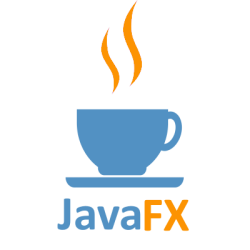
22. December 2021
"Is FX Even Still Alive?" – JavaFX Adopters Meeting 2021

Is FX even still alive? From QFS' point of view, we can answer this question with a clear "yes": JavaFX is alive and well and has been in use via QF-Test/FX in multiple large projects since 2014.
The lovely thing is that QF-Test/FX requires little maintenance, and tests of JavaFX are very stable.
Originally developed by Oracle and made an official part of the JRE with Java 8, JavaFX was removed again with Java 11 and continued as the open source project OpenJFX - still mainly maintained by Oracle, but in cooperation with Gluon and other active participants. On a technical level this move was quite reasonable and OpenJFX is very much alive, as also proved by the JavaFX Adopters Meeting of November 16.
Invited by Zeiss, the aforementioned players and many other people from Europe interested in JavaFX came together online to share their experiences and ideas around JavaFX. Among them, for example, was JPro which brings FX into the web browser - and of course can be easily tested with QF-Test. For QFS, our own Gregor Schmid and Michael Höber attended.
Uncertainty and Criticism
So why does the question "Is JavaFX still alive?" come up again and again?
If you search for JavaFX on the internet, you will find some amount of uncertainty and criticism from voices marked by the disastrous marketing behavior on the part of Oracle at that time. The 'net does not forget. At least the tanker Oracle is now slowly moving in a different direction. Nevertheless, JavaFX's notoriety caused by this history does not do justice to its outstanding technical quality.
We at QFS do not experience JavaFX as the long awaited successor of Java Swing. Yes, a part of our customers who migrate their applications away from Swing rely on JavaFX. But a much larger portion is moving toward Web technologies instead. The biggest point in favour of JavaFX is the "perceived quality" of projects built with it. Where we accompany JavaFX projects more intensively in testing we generally see high application design quality and consistently built test architectures.
What can we do?
So the participants of the JavaFX Adopters Meeting came back to the core question: How can the awareness and popularity of JavaFX be improved? A patent remedy is not emerging. Maybe Oracle will increase its visible efforts again in the foreseeable future - that would be helpful at any rate, especially since JavaFX (and the associated logo!) is a trademark of Oracle and may not be used freely. Therefore there was also a serious discussion whether the - less burdened - name OpenJFX should be emphasized instead. A nice, custom logo would be the urgent first step for this.
In any case, we would need companies whose core applications are based on JavaFX to actively support this project. They could, for example, commit themselves to communicating their framework preferences more clearly. Or they could contribute to the further development of JavaFX by transferring their own improvements to the OpenJFX project, enter them at JFX-Central or JFX Ensemble or support Gluon by signing a maintenance agreement. After all, Gluon manage a significant amount of the development efforts and they are the central point of contact for the binary packages.
So we do have a chance over the next few years to make JavaFX known to the broader Java developer community for what it could be: A high-quality, modern, mature replacement for Java Swing.